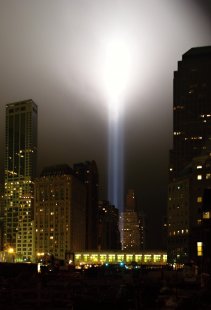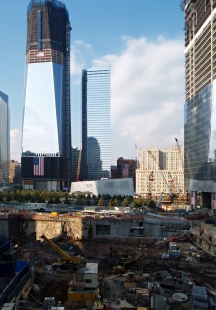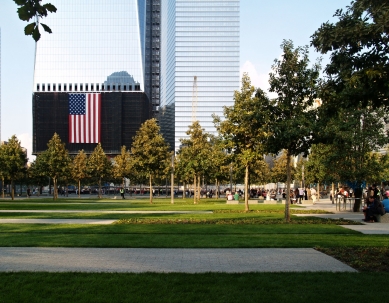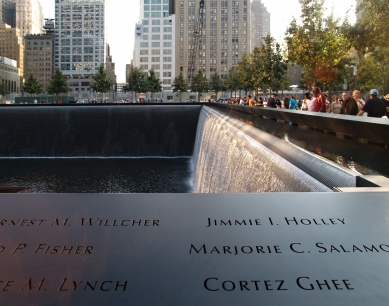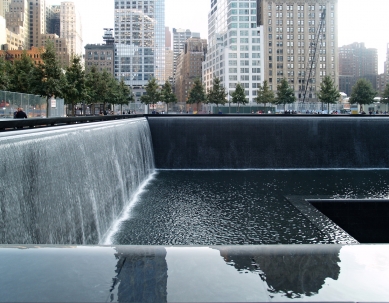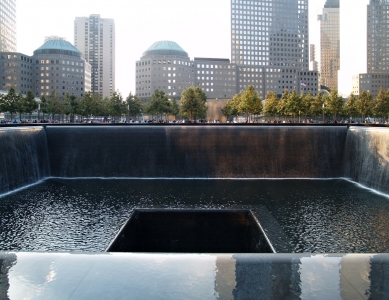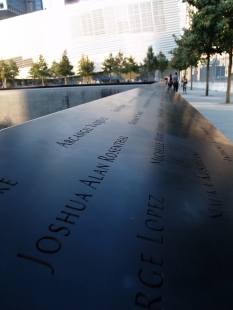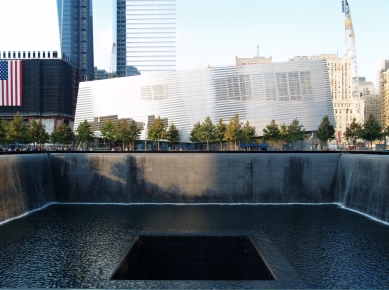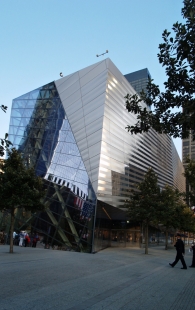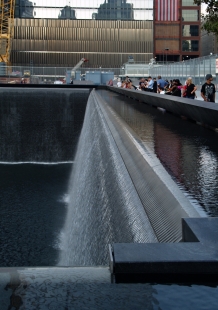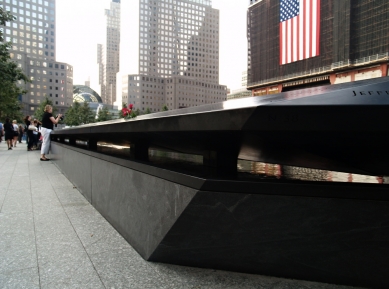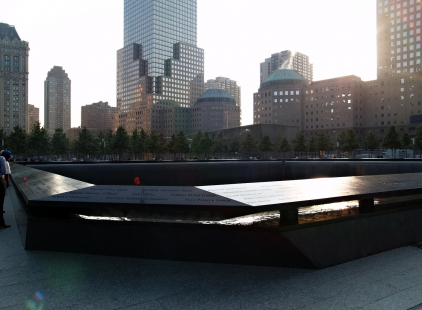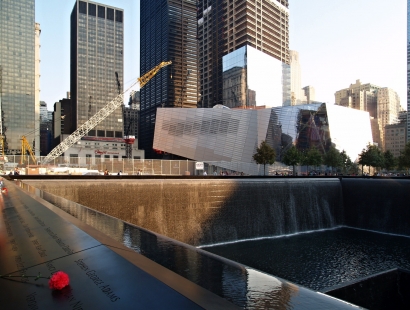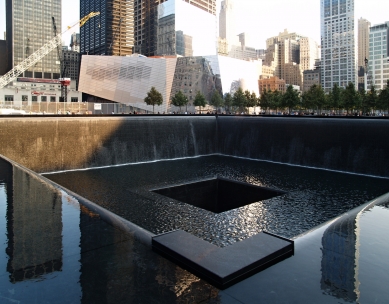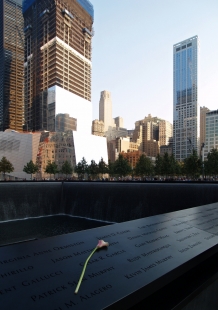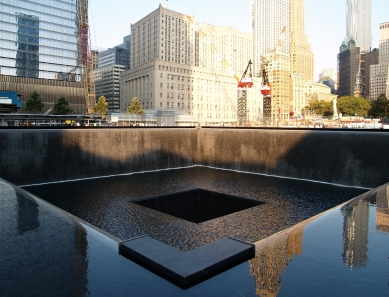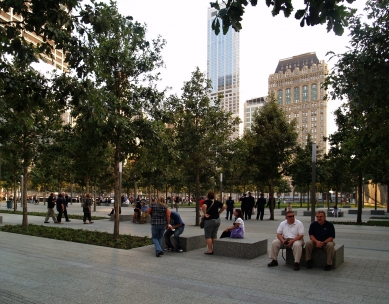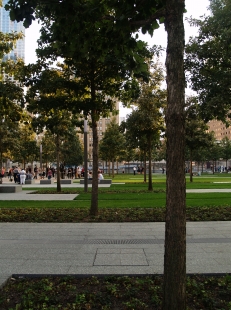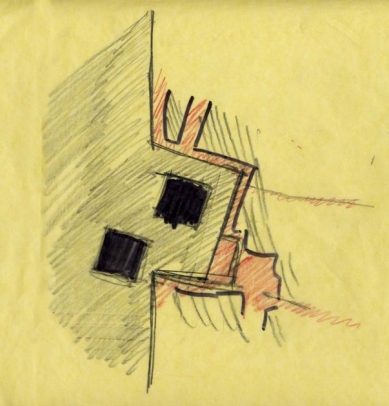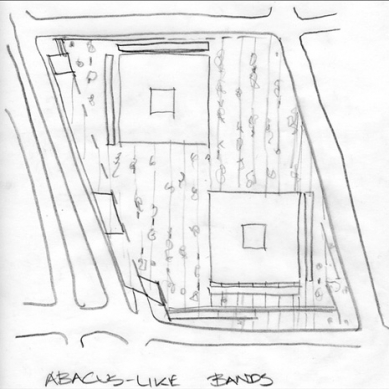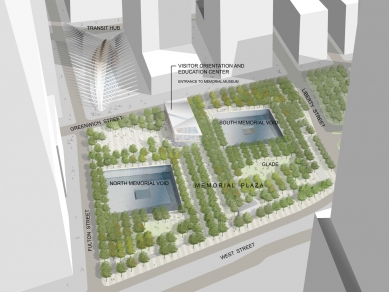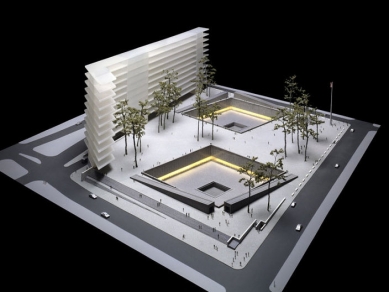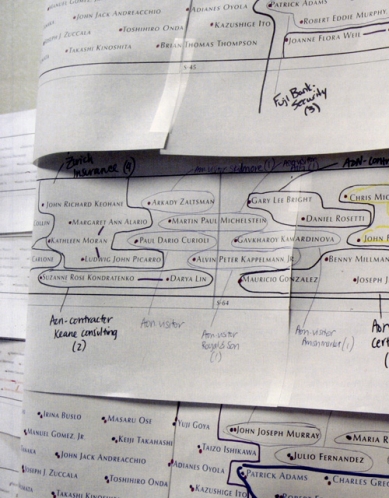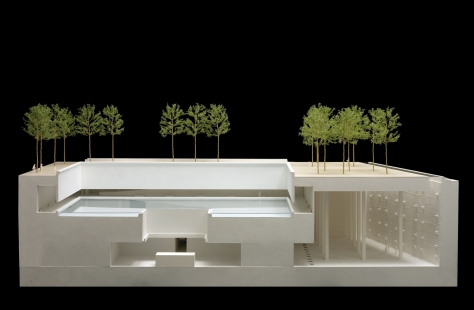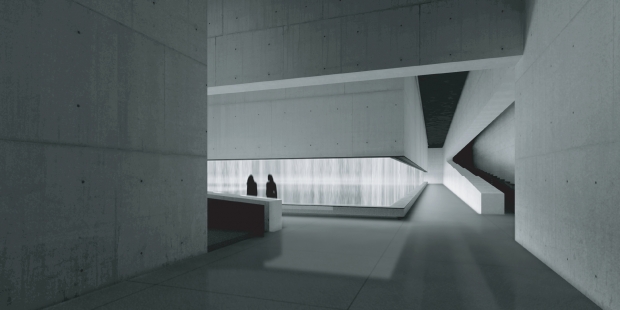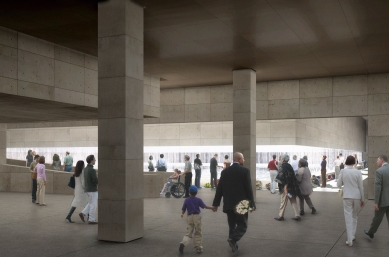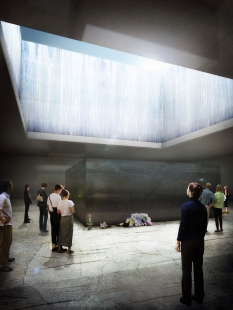
National September 11 Memorial
Reflex absence

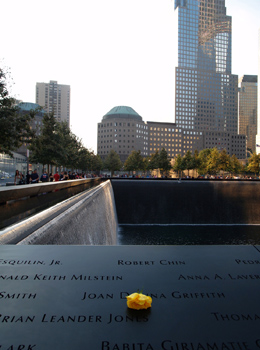 |
Two granite pools, placed in the footprints of the former "Twin Towers," with ten-meter waterfalls around the perimeter, were surrounded by people imprinting the names of their relatives on paper. Architects Michael Arad and Peter Walker did not attempt to overwhelm visitors with design tricks but let the place speak for itself. By reflecting on absence and underscoring the consequences of the attacks, they embodied the lives lost. The simple forms emphasize that emptiness and loss. Along the edges of the pools, bronze panels are engraved with the names of nearly three thousand people who did not survive the September 11 attacks (in New York, Washington, and Pennsylvania) and the previous attack on the WTC in February 1993. At night, they are illuminated from below, further enhancing the emptiness they are meant to evoke. They form the essence of the entire memorial, and therefore great attention was paid to their design. They are not arranged alphabetically but grouped within families, coworkers, or rescuers. Despite all the diligence, there was an error in one name, so part of the panel will have to be replaced.
The rest of the Memorial Plaza is planted with four hundred white oaks, which were chosen especially for their shape and changing colors. The background of the memorial will change throughout the year from green to yellow-orange to purple. Strips of grass alternate with strips of concrete paving, which also forms a system of spacious underground planters for the trees. This gives them ample soil and space and prevents them from being compressed by the pavement. The trees are irrigated with rainwater collected in tanks beneath the plaza.
The design also involved Denis Brody Band and the Norwegian studio Snøhetta, who are the authors of the Museum, which is located beneath the Memorial Plaza. Only the crystalline entrance pavilion rises to the surface. The museum will open next year (2012) and will feature, among other things, two beams from the former "Twin Towers", a flood wall that protected southern Manhattan from flooding, and other information about the attacks.
The Memorial Plaza is part of the city and also part of the memorial - it does not separate itself from the city but creates an open space that is part of it and is for the daily life of New Yorkers. This has created a space for slowing down, stopping, and reflection in the southern part of Manhattan.
The English translation is powered by AI tool. Switch to Czech to view the original text source.
4 comments
add comment
Subject
Author
Date
mimoriadne posobive
Lamik
19.01.12 10:06
diera
Martin Fabian
20.01.12 09:36
Jen dve jamky?
takyarchitekt
21.01.12 01:59
One World Trade Center
David Pištělák
18.07.13 12:14
show all comments


